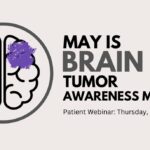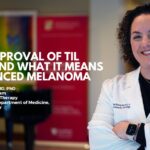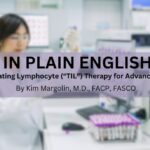
Let’s start with some fun facts about Oregon:
Oregon boasts the deepest lake in the U.S., Crater Lake, with a depth of nearly 2000 feet. It is home to the shortest river, called D River, a mere 121 feet long. The tallest barber pole stands in Forest Grove and measures a whopping 72 feet. Finally—and for some, it’s the most fun fact of all—Oregon charges no sales tax.
But Oregon boasts some not-so-fun facts, too, particularly when it comes to melanoma. The incidence rate of melanoma in Oregon is 26.1 per 100,000, the 16th highest in the U.S. The death rate is also worth noting: 2.4 per 100,000, ranking 20th among U.S. states.
Just as we’ve observed for other states with higher than average melanoma incidence, there are at least two potential explanations for Oregon’s numbers: It’s a state that is home to a primarily lighter-skinned population, and its residents are active outdoors.
Melanoma rates and potential explanations aside, the more important question is what Oregon, its medical centers, and its melanoma community are doing to educate, treat, and support its residents. The answer is, thankfully, a lot.
Sancy Leachman, M.D., Ph.D., Chair of the Department of Dermatology and OHSU and the Melanoma Program Director of the Knight Cancer Institute leads an all-front program called the War on Melanoma™, the goal of which is to eliminate melanoma as a cause of death. The War on Melanoma focuses on the link between early detection and survivorship, and brings science, technology, and public health outreach together with the general public, patients, families, and healthcare providers in order to achieve its goal.
The War has multiple efforts, perhaps most importantly the Melanoma Community Registry, which contains more than 9000 members as of 2021. The Registry was developed to speed the research process by identifying people who are affected by melanoma and/or who would like to be engaged. This engaged community of volunteers can allow for studies to enroll more quickly, education to spread more broadly, and public policy to be changed more effectively.
A massive public health campaign, called Start Seeing Melanoma™, is also part of the War. The campaign is designed to inform the public that melanoma early detection is critical. Key pieces of information include “What to Look For,” when doing a skin cancer self-exam, “How to Look,” with instructions on how to do a self-skin exam (provided by AIM at Melanoma), and “What to Do if You Find Something,” with recommendations for follow-up care.
Educational curriculums are another War effort, and the offerings range from a provider-level CME training to skincare, hair, massage, etc. professional training, to a high school outreach program. The skincare, hair, etc., professionals training is called The Skinny on Skin, a collaboration between IMPACT Melanoma and OHSU. On top of all of what’s listed above, the War on Melanoma hosts an annual community event that includes the AIM at Melanoma 5K Walk and forums/roundtables for melanoma patients, families, and friends.
“Early detection in melanoma works,” says Dr. Leachman. “And we know that awareness is a key piece of early detection.” The War on Melanoma is designed to test whether increased awareness will increase early detection, and whether that will in turn decrease death.
Besides prevention and awareness, Oregon is home to many important research, treatment, and support efforts.
Providence Cancer Institute houses the Providence Melanoma Program, where a number of studies of investigational and FDA-approved immunotherapies for people with advanced melanoma are currently open. Walter J. Urba, M.D., Ph.D., co-medical director of the Melanoma Program at Providence Cancer Center with Brendan D. Curti, M.D., previously led the global, multi-site clinical trial of ipilimumab. The study found that ipilimumab provided a significant survival benefit compared with standard therapies. The FDA approved ipilimumab under the brand name Yervoy in March 2011, the first of many new melanoma treatments in the last ten years. Current studies are evaluating ipilimumab’s effectiveness when combined with other immune-boosting antibodies and melanoma therapies. Other treatments currently finding success in Providence patients are a combination of radiation and high-dose interleukin-2 immunotherapy.
Indeed, research is critical. OHSU and AIM at Melanoma have partnered to launch the OHSU branch of the International Melanoma Tissue Bank Consortium (IMTBC). OHSU is one of six global institutions that are collecting a critical mass of fresh frozen primary tumor tissue—an initial goal of 500 samples in total—and corresponding patient data, which will be available to their researchers and to researchers around the world who apply to use it. A fresh-frozen primary tissue bank—fully annotated and collaborative—has never been achieved before in melanoma, and it has taken more than a decade of dedicated work to accomplish. The IMTBC is a global first because of the following combination of factors:
- It’s a consortium—the six institutions are sharing data and tissue samples with each other
- It’s collaborative—researchers around the world can apply to obtain tissue samples and data for research
- The tissue will be fresh frozen—RNA is preserved, unlike in the standard formalin-fixed, paraffin-embedded process
- The tumors are primary—not metastasized
- There will be a critical mass—a goal of 500 in the first two years, and continued collection thereafter
- Full annotation will accompany each tissue—patient data, including full medical history (depersonalized), will be available for study along with the tissue
- Samples will accompany each tissue—blood and urine samples will be collected for each patient
“A biobank of fresh frozen primary melanoma tissues is truly the pot of gold for research,” says Dr. Leachman. “Critical information is available in the primary tumor—information we cannot get in metastasized tumors, such as predictive and prognostic factors. And when primary tumors are fresh frozen, RNA is intact, and the cell’s immune response is visible. This bank will be a treasure trove for researchers.”
But it’s not just the large cancer centers that educate and support the community in Oregon. Local non-profits, dedicated volunteers, and individual healthcare professionals throughout the state are an important part of the effort to reduce melanoma incidence and support those with the disease. Sol Survivors is a melanoma community that comes together both on Facebook and in-person (outside of COVID) to support each other and help spread prevention and awareness messages all over Oregon. Their members are patients at Providence, OHSU, and elsewhere. They are longtime participants in the AIM at Melanoma Steps Against Melanoma walks. They create a local, supportive community for Oregon.
Countless volunteers in the Oregon melanoma community help with education and support, but AIM is particularly grateful for two who have served as our walk coordinators and community leads, each for many years: Stephanie Heilman and, currently, Robin Jon Zimmerman. Stephanie is a melanoma survivor, and Robin lost his wife to the disease. It’s community members like Robin and Stephanie, groups like Sol Survivors, and so many other doctors, nurses, and other providers who are members of and who serve the melanoma community in Oregon.
With the efforts of all those noted in this article—and surely others we haven’t mentioned—Oregon residents should know the battle against melanoma is heavily underway.
Recent Posts

May is Brain Tumor Awareness Month

President’s Letter | April 2024

Celebrating a Milestone: 20 Years of the Dallas Steps Against Melanoma Walk

Interview with Allison Betof Warner, MD, PhD: TIL Therapy

